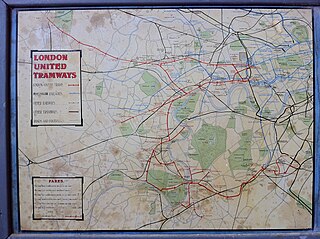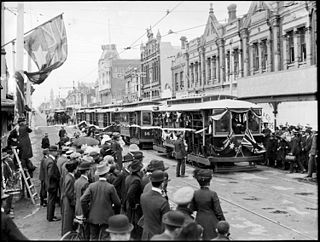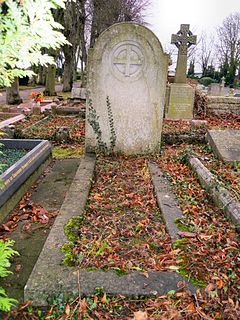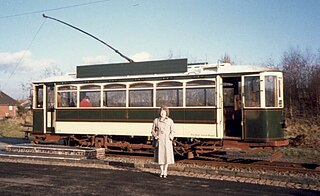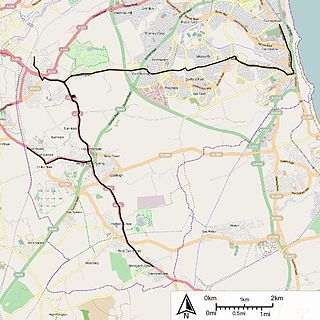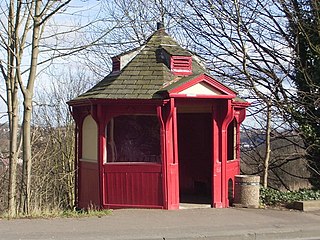The British Gas Traction Company was incorporated on 13 July 1896 with an initial capitalisation of £250,000. Its major shareholders were Russell Cummins and John Fletcher Moulton M.P. [1] The company was set up to operate gas-powered trams, which it worked initially on the Blackpool, St. Annes and Lytham tramway, the first such tramway in Britain. The early success of the vehicles led to the company being invited to operate similar schemes in other parts of the country, including a newly constructed three-mile stretch of tramway in Trafford Park. The Trafford Park service opened on 23 July 1897, but it was suspended only a few days later after two women were injured when one of the trams left the rails, and the service did not resume until 8 April 1898. [2] The trams were powered by town gas, and had a maximum speed of 12 miles per hour (19 km/h); their distinctive exhaust smell quickly earned them the nickname "Lamp Oil Express". [3]

John Fletcher Moulton, Baron Moulton was an English mathematician, barrister and judge. He was a Cambridge Apostle.

A tram is a rail vehicle which runs on tramway tracks along public urban streets; some include segments of segregated right-of-way. The lines or networks operated by tramcars are called tramways. Historically the term electric street railways was also used in the United States. In the United States, the term tram has sometimes been used for rubber-tyred trackless trains, which are not related to the other vehicles covered in this article.

Trafford Park is an area of the Metropolitan Borough of Trafford, Greater Manchester, England, opposite Salford Quays on the southern side of the Manchester Ship Canal, 3.4 miles (5.5 km) southwest of Manchester city centre and 1.3 miles (2.1 km) north of Stretford. Until the late 19th century, it was the ancestral home of the Trafford family, who sold it to financier Ernest Terah Hooley in 1896. Occupying an area of 4.7 square miles (12 km2), it was the first planned industrial estate in the world, and remains the largest in Europe.
Contents
By 1899 the company was in serious financial difficulties, and it went into compulsory liquidation on 1 November that year. It was subsequently administered by the liquidators until 29 August 1914, and removed from the register of companies on 14 February 1919. [4]
Liquidation is the process in accounting by which a company is brought to an end in the United Kingdom, Republic of Ireland and United States. The assets and property of the company are redistributed. Liquidation is also sometimes referred to as winding-up or dissolution, although dissolution technically refers to the last stage of liquidation. The process of liquidation also arises when customs, an authority or agency in a country responsible for collecting and safeguarding customs duties, determines the final computation or ascertainment of the duties or drawback accruing on an entry.
Companies House is the United Kingdom's registrar of companies and is an executive agency and trading fund of Her Majesty's Government. It falls under the remit of the Department for Business, Energy and Industrial Strategy (BEIS) and is also a member of the Public Data Group. All forms of companies are incorporated and registered with Companies House and file specific details as required by the current Companies Act 2006. All registered limited companies, including subsidiary, small and inactive companies, must file annual financial statements in addition to annual company returns, which are all public records. Only some registered unlimited companies are exempt from this requirement.

